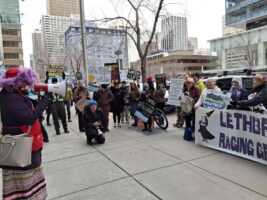The local government-backed not-for-profit group behind Victoria’s first inner-urban community battery has turned to solar powered public transport to raise awareness of the vital role that shared energy storage can play in the shift to renewables.
The Yarra Energy Foundation last year led the installation of a 110kW/284kWh lithium-ion battery energy storage system (BESS) in the inner Melbourne suburb of Fitzroy North – Australia’s first third-party independently-owned community battery.
The BESS, using a battery technology from Norway called PowerShaper, also marked the first to be installed as part of the state Labor government’s $11 million Neighbourhood Battery Initiative, with $800,000 in grant funding contributing to its installation.
More than a year later, YEF has partnered with Yarra Trams to secure more funding from the state government scheme to develop business cases for neighbourhood batteries across 10 metropolitan sites. But the partnership has also led to another idea.
The idea was to get people thinking and talking about community batteries by putting a YEF-wrapped tram in circulation on the Melbourne network. That tram – pictured above – rolled onto the tracks this week.
The four-month “Harness the sun with community batteries” campaign will invite commuters to complete an interactive quiz, with one six-month subscription to the Lug+Carrie e-bike rental service up for grabs for those who take part.
YEF and Yarra Trams say the campaign also hopes to encourage better energy choices, like taking the tram, which in Melbourne are all powered by 100 per cent renewables after the Andrews government underwrote the construction of large-scale solar in Victoria for that very purpose.
“Our vision is for a cleaner energy future that addresses a changing climate,” said Yarra Energy Foundation (YEF) CEO Dean Kline on Wednesday.
“Getting there means we need new ways to get renewable energy to everyone, and community batteries fill the ‘missing middle’ of storage that we want people to know more about.”
Community or neighbourhood batteries have had a decent run in the mainstream media lately due to their popularity as a policy lever for governments across Australia to pull in the name of soaking up the huge amounts of solar that flood our capital city grids on an increasingly regular basis.
But how they are installed and operated, and by whom, remains a point of contention in the broader energy industry.
A common complaint – articulated on RenewEconomy just this week – is that the inclusion of monopoly network companies in community battery funding schemes clashes with their raison d’être: to store excess rooftop solar and share it locally during times of peak demand, spreading the benefits of cheap and clean power with all, including non-solar households.
Others argue that the levels of complexity in regulating, operating and monetising community batteries make home battery uptake a much better and more genuinely consumer focused solution to taming the solar duck.
But YEF, which installed the North Fitzroy community BESS with the backing of network operator CitiPower, argues that community batteries are the ‘Swiss army knife’ of modern power systems.
“To be absolutely clear, in addition to neighbourhood batteries, we support the rollout of household batteries, other so-called ‘behind-the-meter’ batteries, grid batteries, and EVs – let a thousand batteries bloom!,” YEF’s LLoyd Heathfield and Tim Shue wrote here in August.
But, the add, “neighbourhood batteries also have the potential to transform the energy market and build social momentum around renewable energy.
“From our experience… a shared storage asset within the community has enabled us to start countless conversations and raise awareness about our energy system and personal electricity usage – another benefit which is entirely missed through the lens of ‘quantum of storage’.”
They now hope to continue this conversation on the tramways.
The tram artwork, titled Set the controls to harness the sun, was illustrated by local artist, Hayden Dewar and depicts humanoid characters called ’solarquins’, that are powered by the sun and care for the planet.
The tram was designed by a team at local consultancy, Ellis Jones, who create social impact through award-winning research, strategy, communications and design.










